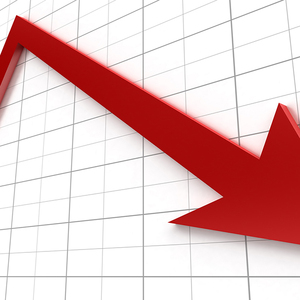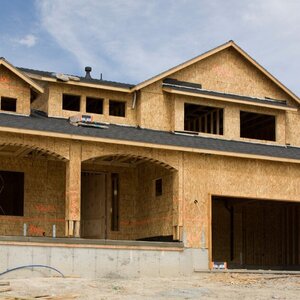The WPJ
THE WORLD PROPERTY JOURNALReal Estate Facts Not Fiction
Residential Real Estate News
Latest Case-Shiller Home Price Index Sends Mixed Market Signals
Residential News » Residential Real Estate Edition | By Michael Gerrity | January 26, 2010 10:02 AM ET
(NEW YORK, NY) -- Data through November 2009, released today by Standard & Poor's for its S&P/Case-Shiller1 Home Price Indices, the leading measure of U.S. home prices, show that the annual rates of decline of the 10-City and 20-City Composites continue to improve, in spite of price declines being measured across many markets during November. This marks approximately 10 months of improved readings in the annual statistics, beginning in early 2009, and is the third consecutive month these statistics have registered single digit declines, after 20 consecutive months of double digit declines.
The chart above depicts the annual returns of the 10-City and 20-City Composite Home Price Indices, declining 4.5% and 5.3%, respectively, in November compared to the same month last year. All 20 metro areas and both Composites showed an improvement in the annual rates of decline with November's readings compared to October.
"While we continue to see broad improvement in home prices as measured by the annual rate, the latest data show a far more mixed picture when you look at other details," says David M. Blitzer, Chairman of the Index Committee at Standard & Poor's. "Only five of the markets saw price increases in November versus October. What is more interesting is that four of the markets - Charlotte, Las Vegas, Seattle and Tampa - posted new low index levels as measured by the past four years. In other words, any gains they might have seen in recent months have been erased and November is now considered their current trough value. On the flip side, there are still some markets that continue to improve month-over-month. Los Angeles, Phoenix, San Diego and San Francisco have seen prices increase for at least six consecutive months. Looking at the annual figures, four markets - Dallas, Denver, San Diego and San Francisco - have finally entered positive territory, something we really haven't seen in at least two years in most markets.
"To add more mixed signals, we are in a seasonally weak period for home prices, so the seasonally-adjusted data are generally more positive, with 14 of the markets and both composites showing improved prices in November. On balance, while these data do show that home prices are far more stable than they were a year ago, there is no clear sign of a sustained, broad-based recovery."
The chart above shows the index levels for the 10-City and 20-City Composite Indices. As of November 2009, average home prices across the United States are at similar levels to where they were in late 2003. From the peak in the second quarter of 2006 through the trough in April 2009, the 10-City Composite is down 33.5% and the 20-City Composite is down 32.6%. The peak-to-date figures through November 2009 are -30.0% and -29.2%, respectively.
San Francisco has reported eight consecutive months of positive returns, San Diego has reported seven and Los Angeles and Phoenix are close behind with six. The two Composites were both down 0.2% over the month, and only five of the MSAs reported positive monthly returns for November. Looking at the annual statistics, Chicago is no longer reporting double-digit declines. Dallas, Denver, San Diego and San Francisco are in positive territory with their annual figures at +1.4%, +0.5%, +0.4% and +1.0%, respectively.
Charlotte, Las Vegas, Seattle and Tampa all reached new low levels in November. For Las Vegas, in particular, prices have declined for 39 consecutive months, with a peak-to-trough reading of -55.6%. It is
now just 4% above its January 2000 level. This compares to its peak in August 2006, when the average home price was 135% above that same level.
The table below summarizes the results for October 2009.
Sign Up Free | The WPJ Weekly Newsletter
Relevant real estate news.
Actionable market intelligence.
Right to your inbox every week.
Real Estate Listings Showcase
Related News Stories
Residential Real Estate Headlines
- Orlando's Housing Market Continues to Slow Down This Fall
- U.S. Mortgage Originations Predicted to Hit $1.95 Trillion in 2024
- Construction Input Costs in America Uptick in September
- Global Home Price Growth Further Slows in Mid-2023
- Home Values in U.S. Begin to Slip Late Summer
- Foreclosure Filings in U.S. Spike 34 Percent Annually in Q3
- U.S. Mortgage Credit Availability Upticks in September
- Retail Market is a Bright Spot for Manhattan Real Estate
- Residential Rents in U.S. Dip in September Amid Growing Apartment Supply
- U.S. Mortgage Rates Continue to Surge in October
- Greater Las Vegas Home Sales Down 10 Percent Annually in September
- Most U.S. Homebuyers Say Buying a Home is More Stressful Than Dating in 2023
- Mortgage Applications Dive 6 Percent Last Week in America
- Despite Peak Interest Rates, Global Housing Markets Improved in Q2
- U.S. Architecture Billings Index Reports Softening Business Conditions in August
- U.S. Home Price Growth Pace Upticks Again in August
- 10,000 Residential Properties Have Negative Equity in Hong Kong
- U.S. Pending Home Sales Dropped 7.1 Percent in August
- U.S. Mortgage Rates Reach Highest Level in 23 Years
- American Bankers See Weakening Credit Conditions Through End of 2024
- Palm Beach Area Residential Sales Uptick in August
- Driven by High Mortgage Rates, Pending Home Sales Drop 13% Annually in September
- Miami Area Residential Sales Slip 13 Percent Annually in August
- U.S. Home Sales Dip 15 Percent Annually in August
- Home Flipping Transactions Down in 2023, Profits Up
- U.S. Listings Inventory Rises 4 Percent in August
- The Fed Leaves Rates Alone for Now in September
- Mortgage Applications Uptick in U.S. Amid High Rates
- Single Family Rent Growth in U.S. Drops to 3-Year Low in July
- Greater Orlando Area Home Sales Down 16 Percent Annually in August
- Home Purchase Cancellations Accelerating in the U.S.
- U.S. Construction Input Costs Uptick in August
- U.S. Mortgage Credit Availability Upticks in August
- Monthly Property Foreclosure Activity Upticks in U.S.
- Greater Palm Beach Area Residential Sales Dip 5 Percent Annually in Mid-2023
- NAR Predicts Several U.S. Housing Market Outcomes
- Demand for U.S. Housing is Dropping as Prices Rise
- U.S. Homeowner Equity Decrease by $287 Billion Over the Last 12 Months
- 1 in 5 Millennials Think They'll Never Own a Home in America
- 1 in 8 San Francisco Home Sellers Is Losing Money at Closing in 2023
Reader Poll
Marketplace Links
This website uses cookies to improve user experience. By using our website you consent in accordance with our Cookie Policy. Read More





